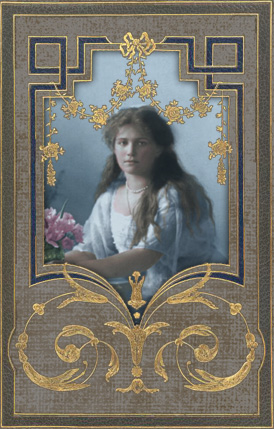Bob Atchison's guide to rare and antique roses and where to buy them with special focus on David Austin Roses and Antique Rose Emporium







CHAPTER 3
CONCERNING ST. PETERSBURG
ST. PETERSBURG itself is both interesting and beautiful. Essentially modern - it is only about two hundred years since it was built - it somehow conveys the impression of antiquity, and this in spite of the fact that the streets are wide and handsome, there are great open spaces, town gardens and boulevards. The idea of a town of the Middle Ages may be conveyed by means of the signboards; for each shop hangs out pictures illustrative of what may be found within. Thus a military tailor has pictures of uniforms, a greengrocer displays paintings of cauliflowers, etc. Vegetables, by the way, are exceedingly dear in the winter in St. Petersburg; cabbages are grown in hot houses. The peasants, however, use salted cabbage for their beloved soup.
The Russians tell you that the signboards are for the benefit of foreigners who cannot read Russian. It may be so; in this case St. Petersburg owes much of her picturesqueness to the stranger within her gates. She owes more than that, however, to strangers, for most of her commerce is in the hands of foreigners. The Russians themselves seem to have little aptitude or care for business. I sometimes think that St. Petersburg owes more of her beauty to the climate, and peculiar costumes than to her signboards. The air is very clear, and for the greater part of the winter clear blue skies prevail, and there is a great deal of sunshine. Cold sunshine it is, but even so, it is better than the fogs of London.
The Russian coachman wears a great fur-lined robe, reaching to his feet and belted in with a bright galon, a flat velvet cap, in blue, yellow, or red, according to the rank of his employer, finishes his costume. The sledge itself is picturesque. Usually drawn by a pair, or three horses, almost covered with a fine network of blue or red lined with silk to keep the frozen snow from being dashed back into the occupant's face. Skimming along over the frozen snow, it is indeed a pretty object.
Then the Russian priests, with their soutanes, low-brimmed hats, and long flowing hair, though not always so clean as fastidious mortals might wish, are distinctly picturesque, as also are the peasant women, clad in national costume, bright red, blue, mauve or yellow sarafams, with paletots to match, trimmed with silver or gold braid, and wearing the Kokoshnik, or crescent-shaped head-dress. St. Petersburg is, however, the most unsanitary town in Europe. The drainage is defective, and the habits of life are not healthy. A prince will live on the ground or first floor of his mansion, and the rest of the house will be let out. In the cellars poor families are crowded together; sometimes as many as twenty people live in one room. If any epidemic breaks out among them they say " It is the will of God." Small-pox is rife, and there is generally a good deal of typhoid fever. The water of the Neva is absolutely poisonous, and yet from the Neva St. Petersburg depends for the most part for her water supply. A good trade is done by selling drinking water from the Duderhoff hills, or from Tsarskoe Selo, which is situated about twenty miles from the capital, and where there is good spring water. I must say Peter the Great chose the site for his city with very little regard for the health of the residents.



